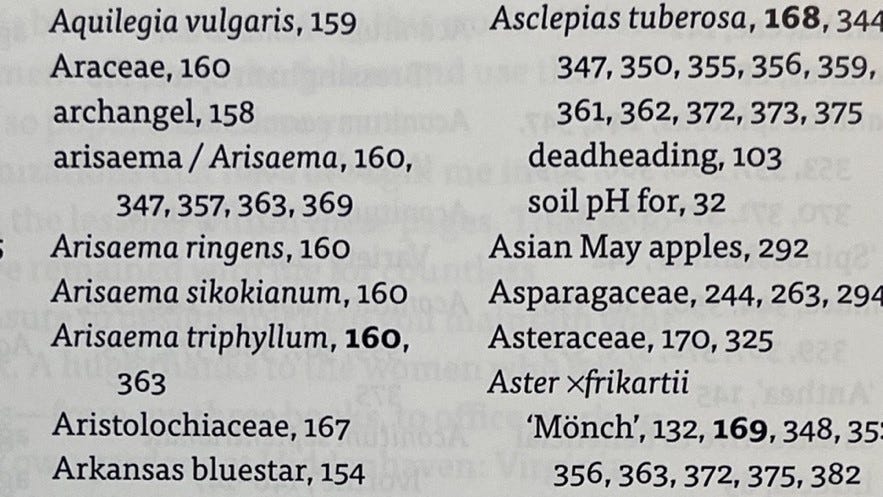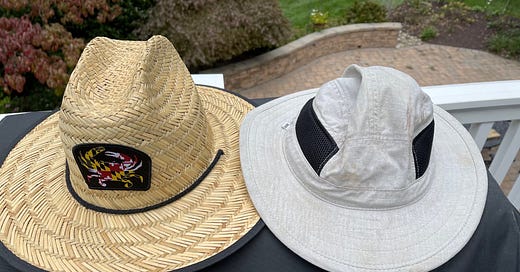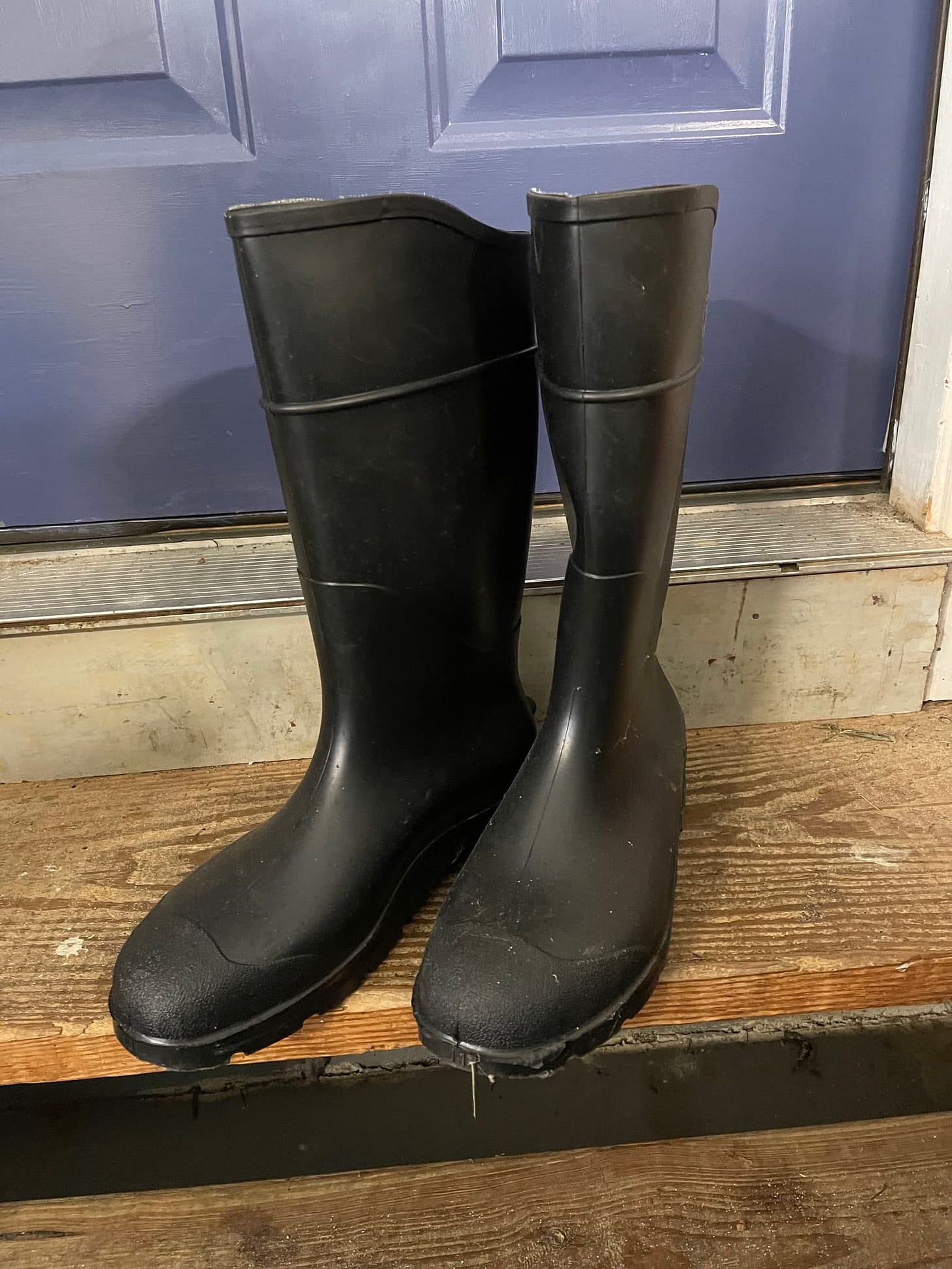How To Become A Gardening Expert
It’s easy to become a gardening expert. All you need is the willingness to look like an idiot and learn a few mysterious words.
First, you need an incredibly stupid-looking hat with a wide brim. You can buy these hats at any garden store, or other store that sells floppy hats. Preferably when you put the hat on it will be just a little too big and rest on your ears, making your ears stick out, adding to your silly appearance. I own two gardening hats with wide brims to keep the sun off on hot summer days, along with cooling side vents. One of my hats is a straw hat that rests comfortably on my ears and has become my favorite. Light, comfortable, stupid-looking.
The thing about stupid-looking gardening hats is that anyone who sees you immediately knows you are an expert gardener because no one else would have the nerve to wear a hat that looks so goofy. When I wear my straw hat, people who don’t know me give me a “thumbs up” because they think I look like a gardener, so I must be a gardener, and if I’m willing to wear a hat that looks so silly, I must be an expert gardener. It helps that this hat happens to have a crab logo with the pattern of the Maryland flag, so maybe folks are giving me a thumbs up for the state of Maryland, but I doubt it. For a Type A in a hurry to get things done, making the leap to “expert” by simply donning a goofy hat is a great use of time and money.
If you want to go beyond the goofy hat to elevate your status to gardening expert, you have several options. You can wear overalls along with your hat. This outfit virtually screams gardening expert to anyone who sees you in it. The clincher is wearing tall waterproof boots. There is simply no doubt that someone wearing a stupid floppy hat, overalls, and waterproof boots is not only a gardener, but an expert gardener at that.
Those who have already become a gardening expert in one day fully understand that wearing the clothes of a gardener is not enough. The hat, overalls, and boots are just a costume. Anyone can wear it. The secret is that it’s not what you wear, it’s how you wear it. To properly wear expert gardening apparel, you must “become” an expert gardener in your mannerisms and your demeanor. Start by slowing down. Expert gardeners don’t do anything fast. They slowly glide through the garden -- some would say they shuffle -- with an unhurried pace that screams that they have lots of horticultural knowledge and no power on earth can hurry them in dispensing it. Most people know that gardening is not a young person’s sport. You must affect the aspect of someone past retirement age who has nothing better to do than cultivate plants. Time passes more slowly for gardening experts than it does for other gardeners, and of course, most people in general. Try your best to look, and feel, old. Own it. Believe it. Become it.
Step two in becoming a gardening expert is to learn the scientific, or Latin names, for at least two of your plants. I’ve found that learning any of the names of your plants, regardless of whether it’s the botanical name or the common name, will confirm expert status in the eyes of many people. There is, I’m told, good reason for having scientific plant names to properly classify plants. Learning the botanical names requires you to learn a totally different language, and I know, from a lifetime of studying rhetoric and persuasion, that utilizing a mysterious language to communicate about a subject confers the title of expert on anyone conversant in said language. The fewer the number of people who take the trouble to learn it, the more expertise conferred. In the case of gardening, the use of Latin names is the perfect announcement that you are an expert. Be warned, however, that the various conventions for using this language can be confusing.

As an example, let’s take a simple plant recently added to my sun garden, coreopsis. Apparently the scientific or Latin name for coreopsis is: coreopsis. You will find this referred to in a gardening book as coreopsis (Coreopsis). But if you look up coreopsis on the internet you will find its common name is Tickseed. If you reference tickseed coreopsis in Better Homes and Gardens Perennial Gardening, you find the name for tickseed coreopsis is C. grandiflora. And if you go to my favorite reference, The Well-Tended Perennial Garden, by Tracy DiSabato-Aust, you will indeed find the plant referred to as Coreopsis Grandiflora, with the subtitle of tickseed in small letters. If you happen to mention to a friend that you’ve recently planted tickseed in the garden, I’m not sure he or she will be impressed by your gardening acumen, but if you casually mention that you recently planted a few Coreopsis grandiflora, I promise they will think you have a degree in horticulture.
Let’s try another one. I recently planted two yarrow plants in my sun bed. There are a variety of species of yarrow, but they all fall under the name Achillea. The name for common yarrow is A. millifolium, which is a very cool sounding name. Doesn’t it sound like an elvish name from Lord of the Rings? Fern leaf yarrow is A. filipendulia, and western yarrow is A. Lanulosa, which definitely sounds like a spell straight out of Harry Potter. Imagine the yawn you get from acquaintances when you say you are trying some yarrow in a sunny spot in the garden. Now imagine their reaction when you tell them you can’t decide whether to try A. millifolium or A. filipendulia in a bed with southern exposure. If you can keep a straight face, they will instantly deem you an expert as they struggle to decide if they are going to ask you what the heck you are talking about.
If you wear your stupid looking floppy hat and drop at least two Latin plant names in a conversation, you are almost guaranteed to rise to expert status in the gardening world. To seal the deal, keep this one last technique in your back pocket.
Compost. If you engage in conversation about compost, it can give you status among gardeners, many of whom are smart enough to pay five bucks for a forty-pound bag of it at the local store and not go to the trouble of trying to make the stuff. The assumption is that Type A gardeners who rhapsodize about composting -- including references to coffee grounds, eggshells, yard waste, bins, piles, green wet material, and brown dry material -- must be experts at their craft.
Of course, Type A gardeners aspire to becoming authentic expert gardeners, as opposed to just appearing to be an expert gardener. Since it will take many years to actually be an expert, you might as well have some fun and fool as many people as you can. I read somewhere, I can’t remember where, that the best technique for pretending to be a gardening expert is to write a gardening newsletter. Nah. It would never work.
Our next post continues the tour of the garden with a close-up look at the Ostrich Fern bed. It’s the only bed in the garden where I’ve pretty much declared victory, with all the shade-loving plants thriving at the same time. It’s gorgeous and you won’t want to miss it.







I agree, Roy.
I'm also a fan of using the jargon -- especially Latin! The more syllables, the better. Tone of voice matters, too. Tossing the terms in a matter of fact, kind of bored, tone makes it sound like you've been using this language forever ...
The hat and boots follow the concept that the two most important parts of any job are also the easiest- Show up on time and at least look like you know what you're doing.
I might add that something I hear gardeners mention frequently when talking about staying in shape or working out is "I do a lot of gardening ". True or not, it is a common response.